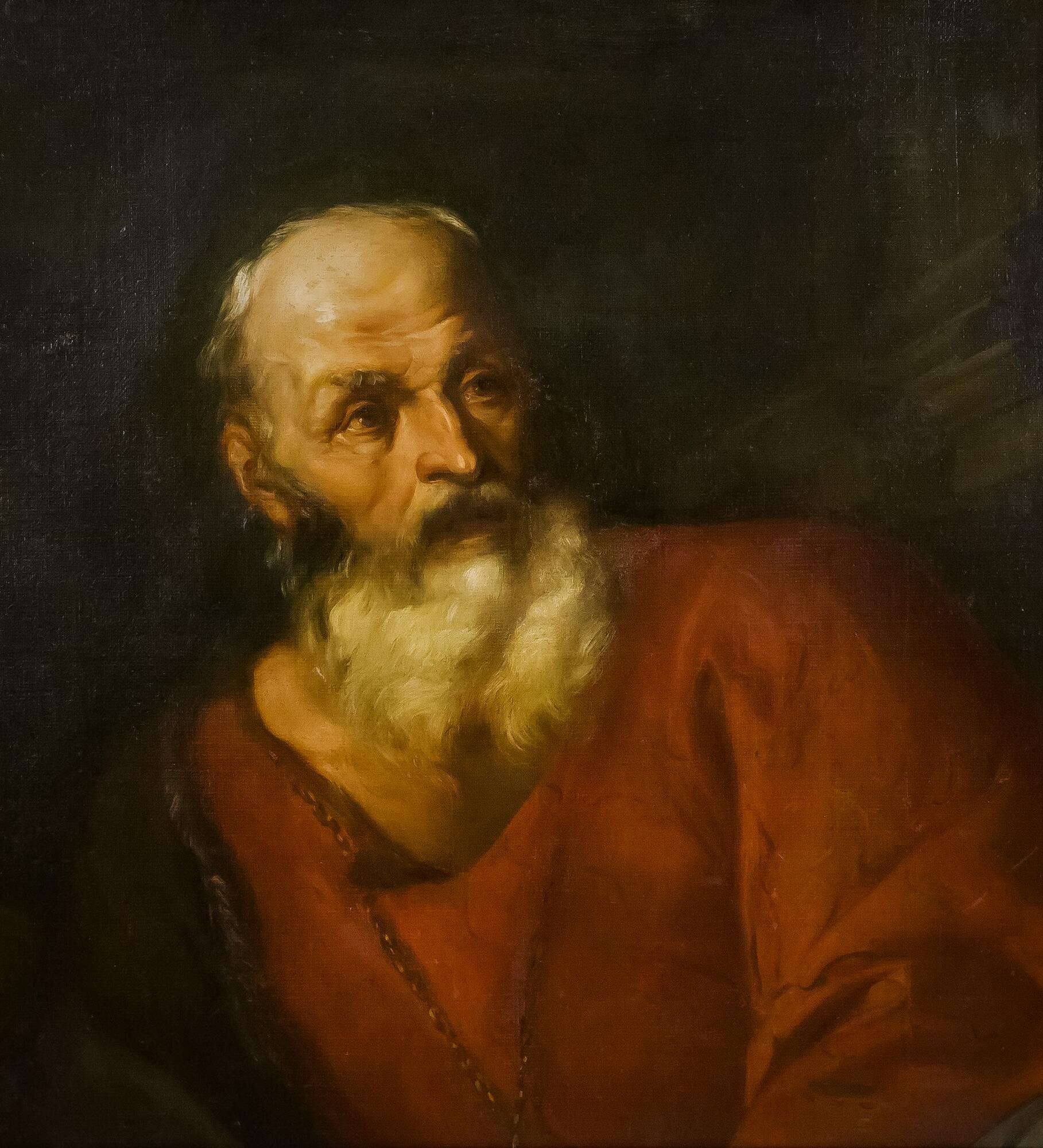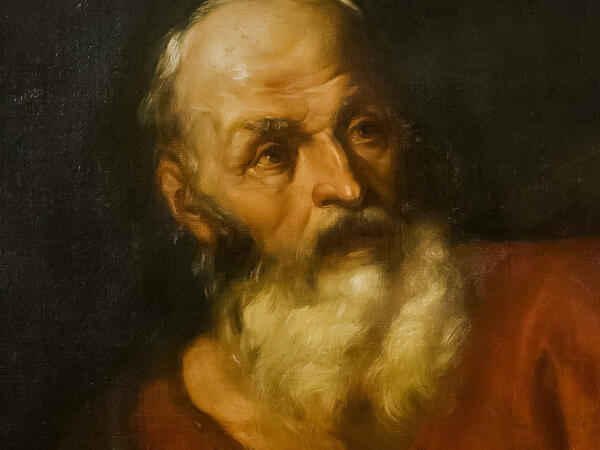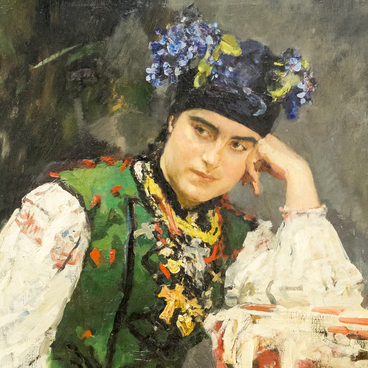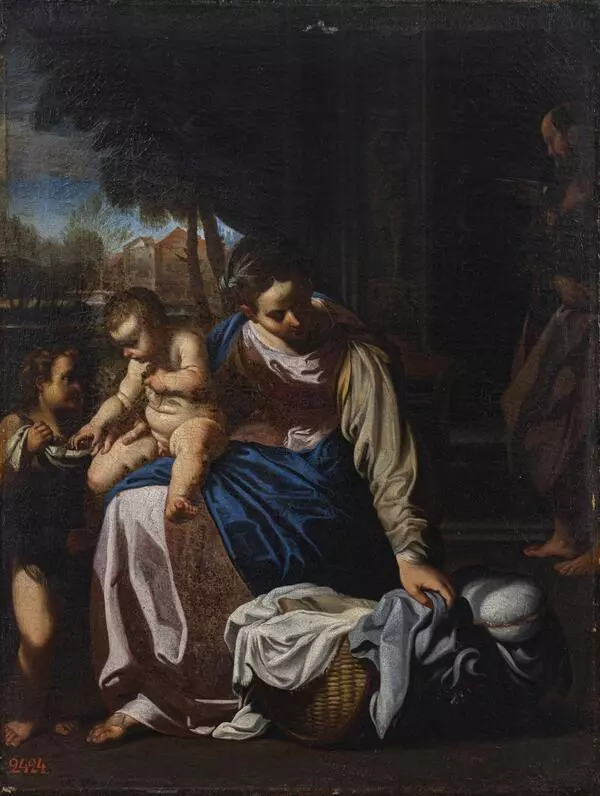‘Portrait of an Old Man’, created in the second half of the 16th century, is considered to be a preparatory painting. Supposedly, Annibale Carracci later included this fragment in one of his biblical scenes. The old man is most probably one of the four Evangelists (only four out of the twelve disciples of Jesus wrote gospels — Mark, Matthew, Luke, and John). In order to make the image look more authentic, a real person posed for the painting. Unfortunately, there is no information about this man.
Annibale Carracci portrayed the old man as majestic and powerful: the figure takes up the greater part of the pictorial space. At the same time, the artist created an impression of movement — the man slightly leans back sideways, as if reacting to something beyond the canvas.
The portrait possesses features that are characteristic of Venetian painting. In that period, Venetian artists preferred painting with splashes of saturated and vivid paints to a strict structure. But in this picture, the contrasts of light and shadow are emphasized more sharply than in the Venetian works. The noble features of the model’s face are also shown in great detail.
Annibale Carracci belonged to a distinguished family that gave rise to the academism style. His cousin Lodovico tutored him in painting, while his elder brother Agostino taught him to engrave. Caracci spent his youth traveling around Venice, Florence, and Parma, while studying various pictorial techniques from the works of Correggio, Titian, Raphael, and Michelangelo. In 1582, he returned to Bologna and together with his brothers founded the “Academy of Those Who Are Making Progress”. The Academy students mimicked the works of the masters and painted from nature, looking to the High Renaissance as the perfect example.
While still engaged in mutual projects, every one of the brothers pursued their own ones. Often, they would hold competitions for the number of orders completed per month. Of the “Caracci trio”, Annibale’s works turned out to be the most remarkable and distinctive. Even his attempts at painting demonstrated the use of innovative techniques that contradicted outdated art principles. After his death, Carracci was buried in the Pantheon next to Raphael as was his wish.
Annibale Carracci portrayed the old man as majestic and powerful: the figure takes up the greater part of the pictorial space. At the same time, the artist created an impression of movement — the man slightly leans back sideways, as if reacting to something beyond the canvas.
The portrait possesses features that are characteristic of Venetian painting. In that period, Venetian artists preferred painting with splashes of saturated and vivid paints to a strict structure. But in this picture, the contrasts of light and shadow are emphasized more sharply than in the Venetian works. The noble features of the model’s face are also shown in great detail.
Annibale Carracci belonged to a distinguished family that gave rise to the academism style. His cousin Lodovico tutored him in painting, while his elder brother Agostino taught him to engrave. Caracci spent his youth traveling around Venice, Florence, and Parma, while studying various pictorial techniques from the works of Correggio, Titian, Raphael, and Michelangelo. In 1582, he returned to Bologna and together with his brothers founded the “Academy of Those Who Are Making Progress”. The Academy students mimicked the works of the masters and painted from nature, looking to the High Renaissance as the perfect example.
While still engaged in mutual projects, every one of the brothers pursued their own ones. Often, they would hold competitions for the number of orders completed per month. Of the “Caracci trio”, Annibale’s works turned out to be the most remarkable and distinctive. Even his attempts at painting demonstrated the use of innovative techniques that contradicted outdated art principles. After his death, Carracci was buried in the Pantheon next to Raphael as was his wish.





